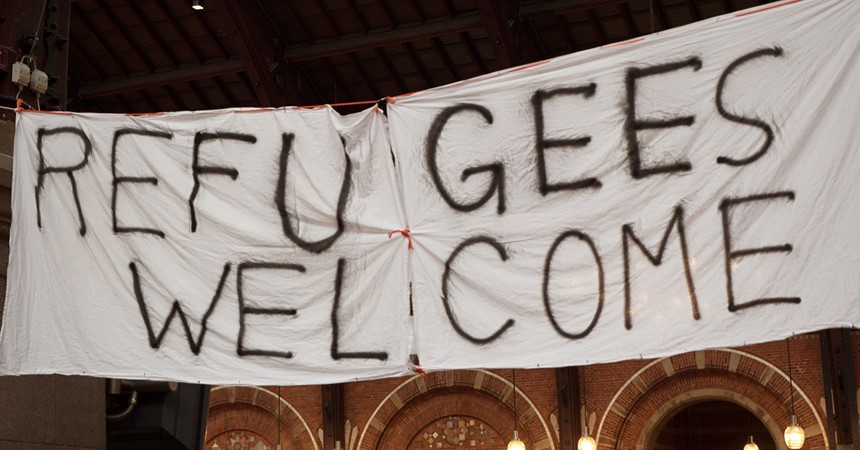The minute a person becomes a refugee, he or she is plunged into a world of uncertainty: most cannot return home because of continued conflict, wars and persecution. Many seek protection in neighbouring countries, but often lack legal status or fail to have their unique set of needs met. Unable to return home or remain where they are, these people have only one viable solution: resettlement in a third country.
The UNHCR identifies and refers refugees for resettlement. However, so small is the number of countries participating in the UNHCR’s resettlement program that at the current rate, it would take 150 years for all refugees under the UNHCR’s mandate to be resettled. In 2015, there were only 107,000 places for 16.1 million refugees, meaning that resettlement was an option for only 0.66 per cent of all refugees. The remainder is left in limbo.
Some countries, including Australia, have increased their resettlement quotas and a further six countries have agreed to join the UNHCR’s resettlement program. While this has helped somewhat, the number of people in need of resettlement far surpasses the opportunities for placement in a third country.
Moreover, the program is not accessible to everyone, since resettlement is determined by refugees’ individual circumstances (family reunification, women at risk, medical needs, unaccompanied minors) rather than length of time as a refugee. Whilst it is necessary to assist the most vulnerable, those without special circumstances can remain in limbo for years, with no idea of when they might be resettled.
The international refugee crisis was highlighted recently when global leaders met at a special summit in New York. Australian Prime Minister Malcom Turnbull pledged to increase Australia’s humanitarian refugee intake to 18,750 people per year. The government boasted of this increase, but in fact it is down from the 20,000 intake announced in 2012-13.
Peculiarly, Mr Turnbull included in this annual quota a small number of Central Americans from Honduras, El Salvador and Guatemala currently stranded in a resettlement centre in Costa Rica. There was no mention of the more than 2000 recognised refugees stranded on Nauru and Manus with no prospect of resettlement in Australia or elsewhere.
The majority of refugees from Central America seek refuge in Mexico and the United States – largely in an effort to reunite with family already resettled in those countries. Why, then, would Australia look to include this group of refugees in its resettlement quota when the urgent resettlement needs of refugees nearer home – Rohingya unable to return to Myanmar, Afghani Hazara stranded in the Indonesia region – are not being met?
While global responsibility-sharing is to be encouraged, this willingness to accept refugees from outside the Asia Pacific region while punishing those on its doorstep appears tokenistic rather than a serious commitment to resolving the world’s global refugee crisis.
At the same summit, the Prime Minister promoted Australia’s ‘success’ in preventing asylum seekers from reaching the country by boat, and argued that the ‘stop the boats’ policy has allowed the government to increase its refugee quota from abroad.
However, such a statement conflates resettlement with asylum; the right to seek asylum (which those people now languishing on Nauru and Manus Island have done) is enshrined in the Refugees Convention as well as the Universal Declaration of Human Rights. There is no mention in either of these documents about states’ obligations to resettle refugees.
A concerning trend has emerged whereby countries such as Australia attempt to trade off their obligations to those refugees arriving without authorisation or proper documentation (as is their right under international law) against a promise of increasing resettlement places for so-called ‘genuine refugees’. A too-heavy focus on resettlement as the ‘only durable solution’ can undermine the principle of asylum.
The commitments made by Mr Turnbull at the New York summit conceal the paltry contribution Australia makes to the refugee crisis, despite presenting itself as one of the most generous resettlement countries in the world. In 2015 Australia recognised or resettled 11,776 refugees – just 0.48 per cent of the global total.
While resettlement remains an important and effective measure for a very small number of people in need, the UNHCR is increasingly focusing on how complementary pathways such as humanitarian visas, family reunion and scholarships could help bridge the gap. Australia can play an important role in this work. In addition to increasing its humanitarian intake, it should make a concerted effort to expand beyond the traditional resettlement program and to provide alternative safe pathways for those in need of protection.
Oliver White is Assistant Director, Jesuit Refugee Service. To read his earlier articles in this series please visit our news site.























































































